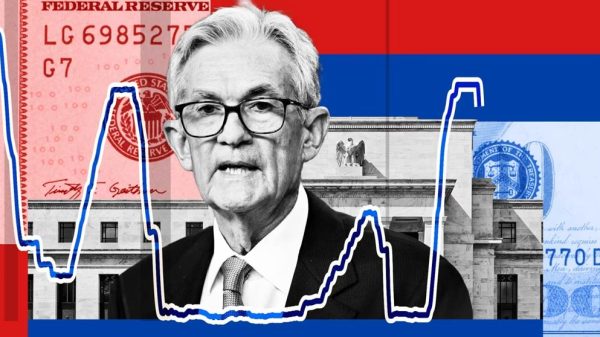Despite ongoing concerns over tariffs and a downgraded economic growth outlook, U.S. markets showed resilience for the second consecutive trading session, driven by continued consumer spending and optimism in global markets.
U.S. Retail Sales: A Mixed Picture
In February, U.S. retail sales rose by 0.2%, falling short of the 0.6% growth expected by economists, according to the Commerce Department’s advanced reading. However, this increase was a marked improvement from January’s steeply revised 1.2% decline (initially reported as a 0.9% drop). While the numbers suggest that U.S. consumers are still spending, the miss on expectations reflects growing skepticism about the sustainability of consumer-driven growth amid rising geopolitical and economic uncertainties.
Tariff Concerns Weigh on Sentiment
The ongoing trade policy under U.S. President Donald Trump continues to cast a shadow over consumer confidence. Tariffs, which act as a tax on imported goods, are expected to increase costs for consumers. According to National Economic Council Director Kevin Hassett, there will likely be more uncertainty in the coming weeks as the administration prepares to announce new “reciprocal” tariff plans by April 2. Hassett, however, expressed optimism that the markets will come to appreciate the benefits of the policy once implemented.
The Organisation for Economic Co-operation and Development (OECD) has taken note of these uncertainties, revising its U.S. GDP growth forecast for 2025 down to 2.2% from the previous estimate of 2.4%. The global GDP growth projection was also lowered to 3.1%, citing “higher trade barriers” and “increased geopolitical and policy uncertainty” as key factors weighing on sentiment.
Market Performance: Gains Across the Board
Despite these headwinds, U.S. markets posted gains on Monday:
- The S&P 500 rose by 0.64%.
- The Dow Jones Industrial Average climbed 0.85%.
- The Nasdaq Composite advanced 0.31%.
This marked the second consecutive day of gains for U.S. stocks, supported by positive momentum in global markets.
Global Markets Follow Wall Street Higher
Asian markets mirrored Wall Street’s gains on Tuesday. Japan’s Nikkei 225 surged by approximately 1.3%, driven by a rally in Japanese trading houses following Berkshire Hathaway’s increased stake in the sector. Meanwhile, Hong Kong’s Hang Seng Index soared over 2%, fueled by a strong performance in Chinese tech stocks.
One standout was Baidu, whose shares jumped more than 10% after unveiling two new artificial intelligence models. The announcement signaled the company’s growing competitiveness in the AI space, with one model rivaling DeepSeek’s R1. Additionally, BYD, the Chinese electric vehicle maker, saw its Hong Kong-listed shares rise by over 6% after revealing a breakthrough charging technology capable of delivering 400 kilometers (approximately 249 miles) of range in just five minutes.
Oil Prices Rise Amid Geopolitical Tensions
Oil prices edged higher on Monday after President Trump warned that any attacks by Yemen’s Houthi militant group would be considered as originating from Iran’s leadership. U.S. crude oil futures rose 0.25% to $67.75 per barrel, while Brent crude gained 0.32%, trading at $71.30 per barrel.
The Road Ahead
While U.S. markets remain buoyed by consumer spending, the combination of tariff uncertainty and a downgraded economic outlook could pose challenges in the coming months. Investors will be closely watching the Federal Reserve’s upcoming meeting on Wednesday, where updated interest rate projections will be released through the “dot plot.” Analysts at Goldman Sachs have described the dot plot as potentially “awkward,” given the current economic conditions.











